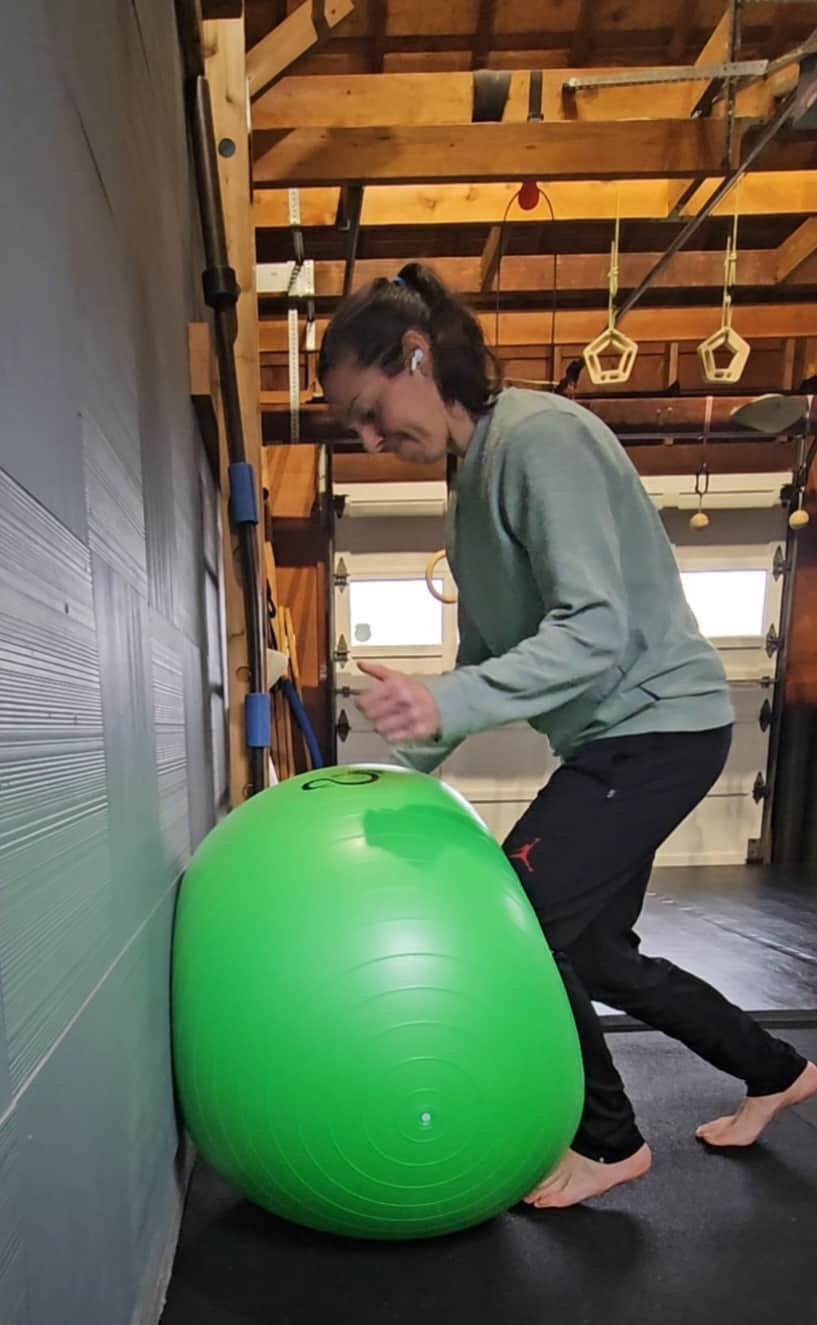
A Different Way to Use, Train, & Treat the Knee (Part 2)
In part 1, I suggested that using the knee as gas instead of brakes could help free up the knee for motion and elicit the hips and ankle-foot as stabilizers. For folks with chronic pain, however, their nervous system likely won’t allow that release with ease. There’s not enough trust. The removal of tension needs to be supplanted with an addition of tension. The question is, how do we get the right tension in the right place at the right time? The answer is through pressurizing.
Concept #2: Pressurize the Knee Joint with a Physio Ball.
There is a reason I gave the tool along with the concept. Bands aren’t big enough to encapsulate what is happening at both the femur AND tibia. Straps are takers, not givers of space. In pushing through the knee itself, we can feel and train for alignment and impetus — we are checking the integrity of the frame. We can evaluate (and manipulate) where the force is coming from.
FLEXION
In flexion, I could differentiate whether it was the hamstring or the calf initiating the knee drive:
My left leg is my up leg, and uses my calf. My right leg is my down leg and uses my hamstring. Since my left knee was the one that was bothering me at the time, I adjusted my foot position, hips, and heel to create the change I was seeking — more hamstring, or more like the right.
The footage of me coaching my sister through this process might offer more insight, as there are instructions and interactions that occur out loud:
Note that she kept her heel down throughout, which made her hinge much more than squat. You want to allow the heel to lift, but you don’t want it to keep moving with the heel. It’s not a calf raise, particularly if you are trying to utilize the hamstring. The heel can lift but you want it to hold. The tibia keeps moving forward by the hips compressing down from above:
The difference between a class 1 and class 3 lever.
EXTENSION
The shin keeps moving in extension, albeit in a backwards direction. The cool thing about pressure is that the continued intent to move is just as productive as actual movement. Below the foot presses flat versus pushes through the transverse arch (light or lifted heel – see the light lines reacting off the ball lines). The ankle folds in more when pressure through the ball of foot is emphasized:
View this post on Instagram
Again, here are some external instructions about what I feel, notice, and am looking for:
The beauty and importance of extension is that you learn to create space in length — one side holds steady while the other attempts to keep reaching through resistance. The sensation is of space-making within the joint, rather than space-sustaining through it.
Part 1: Use the Knees as Gas Instead of Brakes
Part 3: Angle the Feet & Knees



